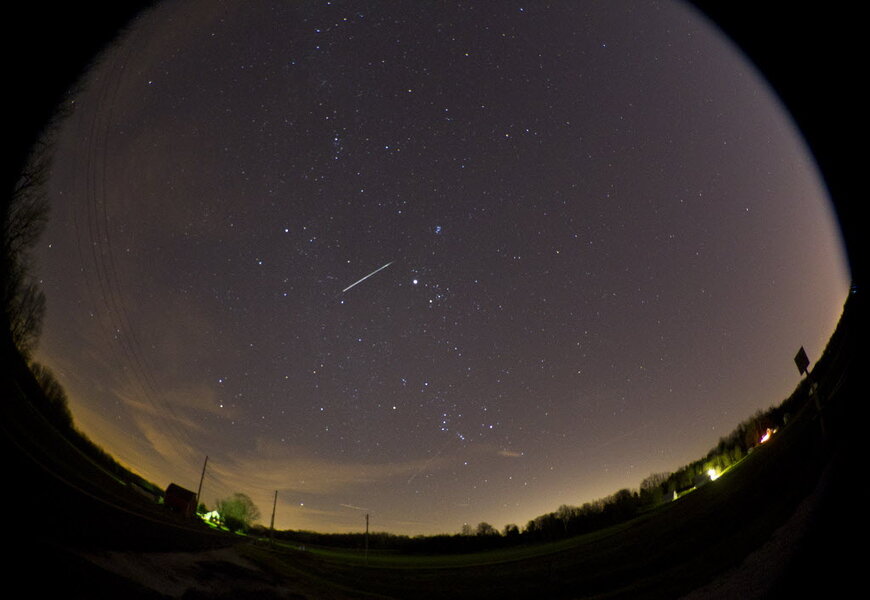Gamma Delphinids meteor shower: Back tonight, after 83 years?
Loading...
In 1930, when the era of jazz and jewels was ending, to be replaced with much harder times, two astronomers in Maryland looked up. That night, they saw something extraordinary: not just one "shooting star," but countless.
The meteor shower they saw that June night became known as the gamma Delphinids, after the Delphinids (“Dolphin”) constellation from which the meteors came. It has not been seen since.
But scientists now say that the elusive gamma Delphinds may again leap across the skies early Wednesday morning.
“A scarcely known meteor shower, the gamma Delphinids, is expected to return to the skies over Earth in early June 2013,” NASA said. “The shower was first observed as an outburst by American observers in Maryland on June 11 1930. Only a few meteors from this shower are thought to have been seen in the decades since, and those identifications are tenuous.”
Astronomers Peter Jenniskens and Esko Lyytinen have predicted that Earth will be in the same region of its orbit on Wednesday morning as it was that summer night some 83 years ago, putting the ready-made wishes again within our view.
The showers are expected to be visible on the East Coast at about 4:30 am EDT, though the shooting stars could arrive as early as 9:30 p.m. Tuesday night, when the constellation Dephinids rises in the eastern sky, according to NASA. From 11 p.m. - 3 a.m. EDT, Bill Cooke of NASA's Meteoroid Environment Office will host a live chat on NASA’s website with a live Ustream telescope view of the skies over Huntsville, Ala.
The gamma Delphinids are expected to be unusually fast-moving meteors, swishing across the skies at a speed of 127,500 miles per hour. But the American Meter Society suggests that you'll need a comfortable chair, as these meteors are expected to be flicking over the Earth at about two minutes apart. The Society also notes that the shooting stars could be visible for only about fifteen minutes to an hour – if they come at all.
Yes, there's a catch. It’s not certain that what the astronomers in Maryland saw that night in 1930 was, in fact, a meteor shower. The light from a full moon that night should have obscured any view of the shower, and no other sightings were reported to confirm the astronomers’ report. Some astronomers have since disputed the very existence of the gamma Delphinids.
We won't know for sure until tonight. Either way, who can blame those Great Depression astronomers for wanting something cosmic to wish upon?







